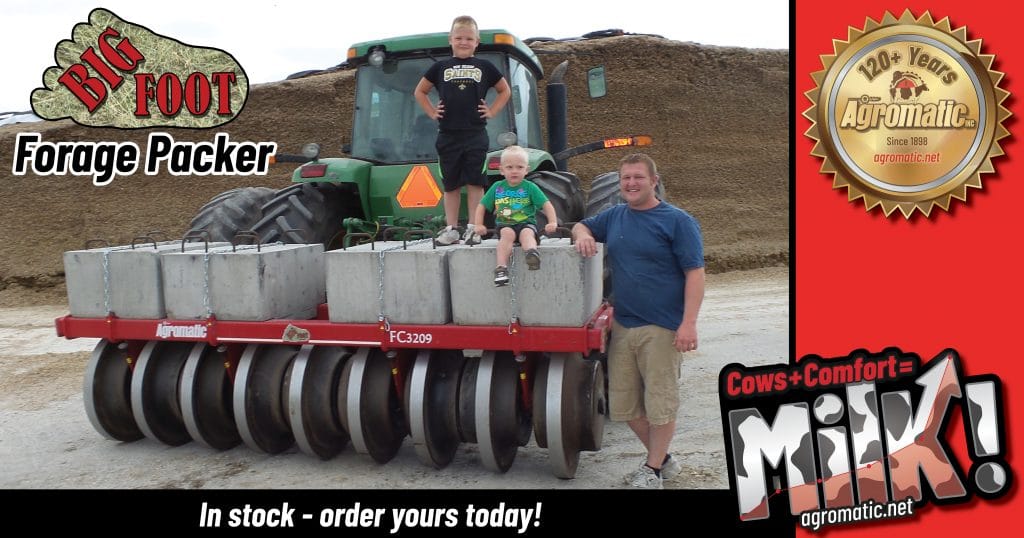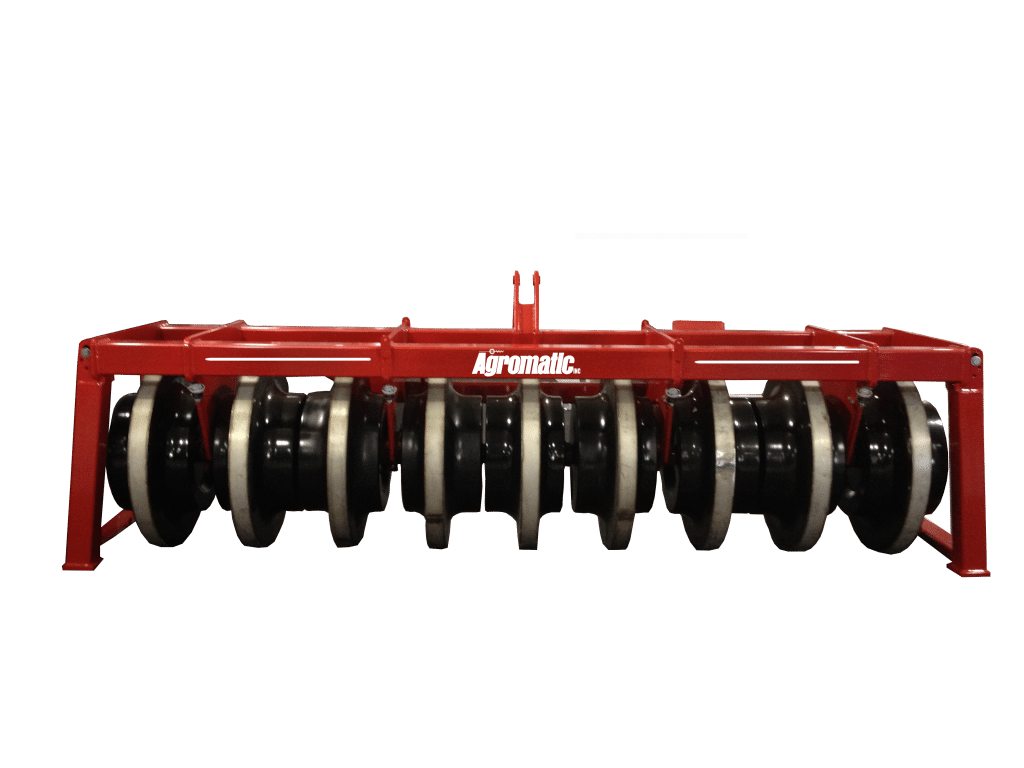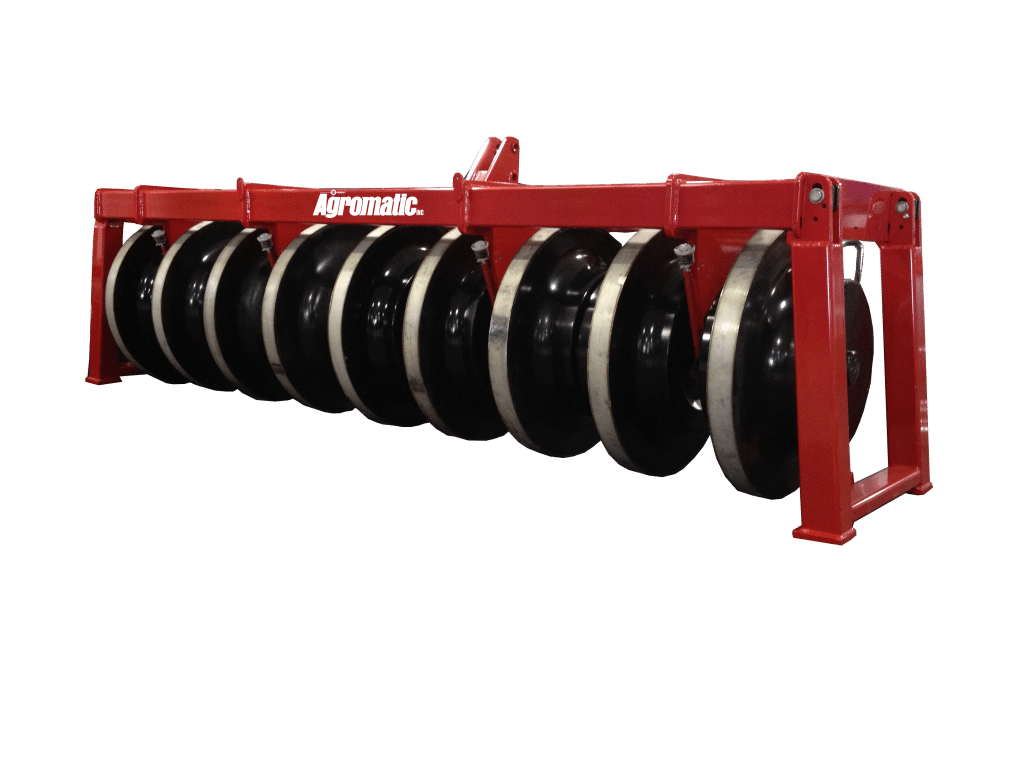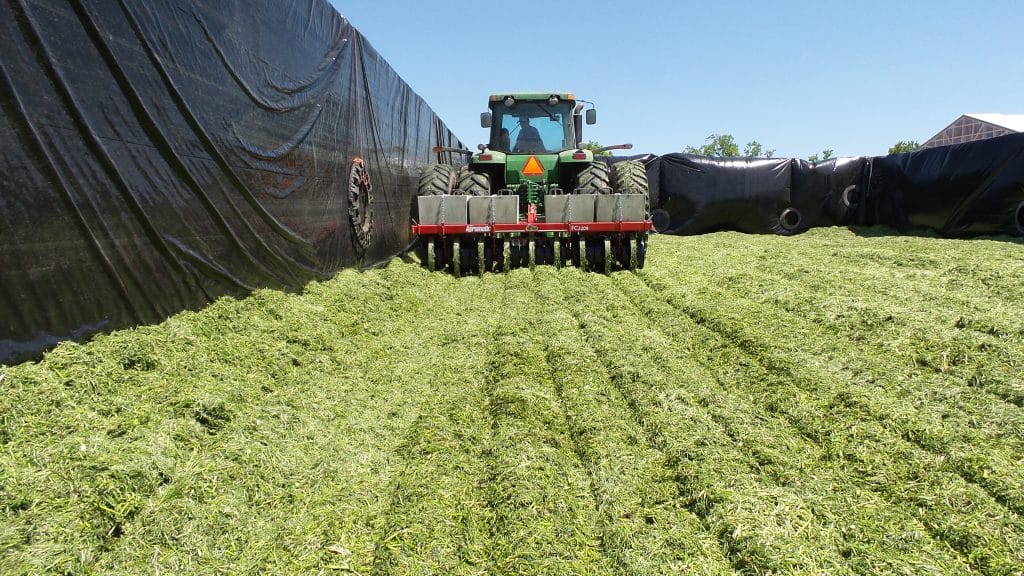Big Foot Forage Packer

Improved silage quality means less purchased feed, healthier cows and higher profits. Reduce spoilage and make the most out of your bunker space or silage pile with Agromatic’s Big Foot Forage Packer! Andrew Rickert of Wisconsin says, “the Big Foot is a must-have during our harvest routine.”
The Big Foot is available in four different sizes ranging from 3,680 to 11,920 pounds making it ideal for any size operation. When fully loaded, it provides over 50 psi pressure per roller to pack the feed thoroughly and efficiently.
Andrew Rickert of Eldorado, Wisconsin is in his 6th year using the Big Foot Forage Packer. Rickert says, “the Big Foot gives us better compaction than other packers we’ve used. We get a nice, solid pack and are able to fit more feed in our bunkers. We are bringing in semi after semi of silage and the packer is a necessity to sustain proper density.”
Agromatic has been selling silage packers for several years. They are built here in Fond du Lac, Wisconsin and we continually incorporate improvements such as an automatic lubricating system, an integrated stand to allow level hitching, and bearings that can be replaced without removing wheels.
All models are equipped with a standard Category 3N/3 hitch. They are in stock and ready to ship. If you’re interested in improving feed quality, give us a call today at (800) 800-5824!
CLICK HERE to visit the Big Foot Forage Packer page on our website.
Big Foot Forage Packer Photo Gallery
See the Big Foot Forage Packer in action!
https://www.youtube.com/watch?v=moU1JU6IS3E








